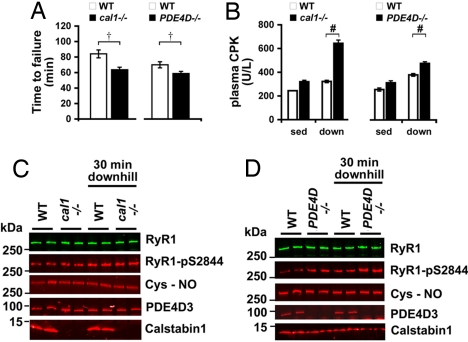Fig. 2.
Muscle-specific cal1−/− and PDE4D−/− mice have impaired exercise capacity. (A) Treadmill running times of 2-month-old cal1−/− (n = 17) mice and WT (n = 12) littermates and PDE4D−/− (n = 6) mice and WT (n = 6) littermates. (B) Plasma creatine kinase (CPK) levels at rest and after a single downhill eccentric treadmill run (n = 4 mice, in triplicate, at each condition). (C and D) RyR1 immunoprecipitated from EDL muscle from cal1−/− (C) and PDE4D−/− (D) mice and immunoblotted for RyR, RyR1-pS2844, Cys-NO, PDE4D3, and calstabin1. Data presented as mean ± SEM; †, P < 0.05, Wilcoxon rank-sum test; #, P < 0.01, unpaired t test. sed, sedentary; down, downhill.

